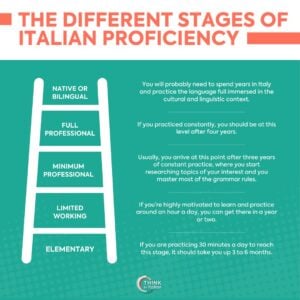Have you ever tried the delicious taste of Ravioli?
But… what does “ravioli” mean in Italian?
Italian cuisine is famous throughout the world for its countless main courses, but let’s see what happens when you put the condiment even inside the pasta.
Ravioli, pasta 2.0
Ravioli are a family of typical products of Italian cuisine, consisting of squares or rounds of fresh egg pasta folded to contain meat, fish, vegetable or cheese filling, depending on the various local types. They are served as a main course and can be in soup or accompanied by sauces. The choice also depends on the type of filling.
But how do you prepare fresh egg pasta?
A perfect dough starts with the ingredients: eggs (strictly fresh), flour, and salt. Once created, the dough is spread with a rolling pin, starting from the center and sliding towards the edge in all directions until the desired thickness is obtained or with the help of a sheeter machine.
Stuffed pasta
Stuffed pasta, a specialty of Italian cuisine, is appreciated and imitated even abroad. It is the perfect pasta for parties and special occasions. Ravioli di magro, tortelloni with ricotta, agnolotti stuffed with meat and tortellini with unique flavors; here are some types of filled pasta that can be served on elegant serving dishes.
But the recipes are so many! We can also find fish ravioli, for example, seasoned with a sauce based on flavored pine nuts, pumpkin tortelli, typical of Mantova but appreciated throughout the country, or pansotti stuffed with zucchini and shrimp and dressed with fresh tomatoes. Cannelloni is also part of the stuffed pasta. Sorrento style is the most famous, a classic of Italian cuisine.
Ravioli: History and Tradition
Ravioli are mentioned by Giovanni Boccaccio in the Decameron (“… they did nothing else but make macaroni and ravioli and cook them …“), thus proving already widespread in medieval society of the time. We can hypothesize their appearance around 1100 a.C.
There are many preparations, but just as many are the names by which ravioli is known throughout the Italian peninsula:
- agnolotti or agnellotti (small in shape) in Piedmont and in the Pavia area
- anolini between Piacenza and Parma
- marubini near Cremona and in the lower Piacenza area
- tortelli in Emilia and Lombardy
- pansoti or pansotti in Liguria
- tordelli or turdeli in north-western Tuscany and in the extreme Levant of Liguria
- tortelli in almost all of Tuscany, from Pistoia to Arezzo, from Pisa to Maremma
- ravaioli or agnolotti in the Marches region
- ravaiuoli in Irpinia
- maccaruni chini in some southern areas
- cauzuni in the lower Cilento, and assume the size of a hand. They are white dough (without egg) with ricotta and parsley filling.
Ravioli has always been also a typical dish of Ragusa, in Sicily, of large dimensions, filled with ricotta and almost always seasoned with pork sauce (sometimes also with oil and caciocavallo).
Taste of home
In short, ravioli in Italian also means family, warmth but also friends, and happiness.
Filled pasta is a universe. It is fun to enter to appreciate the regional differences and the nuances of taste.
As we have seen, Italy is full of stuffed pasta that people liked, liked, and will still like.
Learn more about Italian Cuisine.




















One Response
Ravioli is a delicious Italian pasta dish consisting of small pockets of dough filled with various ingredients. It’s a true delight for your taste buds!